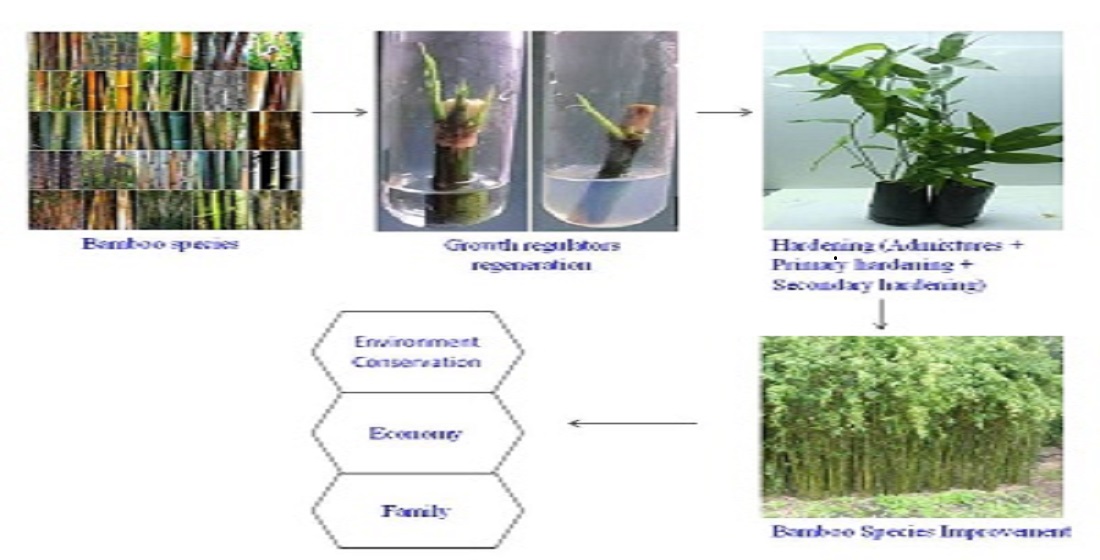Preprint
Review
Tissue Cultured Regeneration and Ecological Values in Major Bamboo Species
Altmetrics
Downloads
668
Views
621
Comments
0
This version is not peer-reviewed
Submitted:
04 June 2022
Posted:
06 June 2022
You are already at the latest version
Alerts
Abstract
Objectives: The promising specific growth regulators are employed tissue culture of the bamboo species. The specific natural hardening mixture supports the acclimatization and adaptation of the protected cultivation. The bamboo species contribute to the carbon sequestration and stabilization of the environment. Findings: The growth regulator 2, 4-D encourages callus induction and growth regulators NAA + TDZ, BAP + Kinetin + Gelrite, BAP + Kinetin + Coconut water + myo-inositol, NAA and TDZ impose plant regeneration in the Bambusa species. The growth regulator of 2,4-D, 2,4-D + Kinetin, 2,4-D + BA, 2,4-D + BAP and 2,4-D + NAA + BAP produces callus induction in the Dendrocalamus species. The growth regulator of TDZ, BA and IBA + Coumarin + Putrescine, BAP + GA3, NAA + Kinetin, BA + IBA, BA + Kinetin + NAA, NAA + Kinetin, Kinetin + IAA has facilitated shoot regeneration in the Dendrocalamus species with the specific period. The growth regulator of BA and TDZ; BAP + TDZ, IBA + Coumarin + Putrescine, BAP + GA3, NAA + Kinetin, BA + IBA, BA + Kinetin + NAA, NAA + Kinetin, Kinetin + IAA develops root regeneration with unambiguous time in the Dendrocalamus species. The growth regulator of BAP and Kinetin + BAP imposes shoot regeneration and IBA and IBA + Coumarin + sucrose conducts root regeneration in the edible bamboo. The natural hardening materials of cocopeat, vermicompost, perlite, cow dung, FYM, compost, soil & garden soil and humus soil, perlite, and FYM recommend in the acclimatization and adaptation of the Bambusa species and Dendrocalamus species respectively. Novelty: The standard growth regulators and hardening mixtures impose tissue culture, acclimatization and adaptation in the bamboo species. The bamboo species involves in managing carbon sequestration, biogeochemical cycle and the environment.

Keywords:
Subject: Biology and Life Sciences - Biology and Biotechnology
Copyright: This open access article is published under a Creative Commons CC BY 4.0 license, which permit the free download, distribution, and reuse, provided that the author and preprint are cited in any reuse.
MDPI Initiatives
Important Links
© 2024 MDPI (Basel, Switzerland) unless otherwise stated





